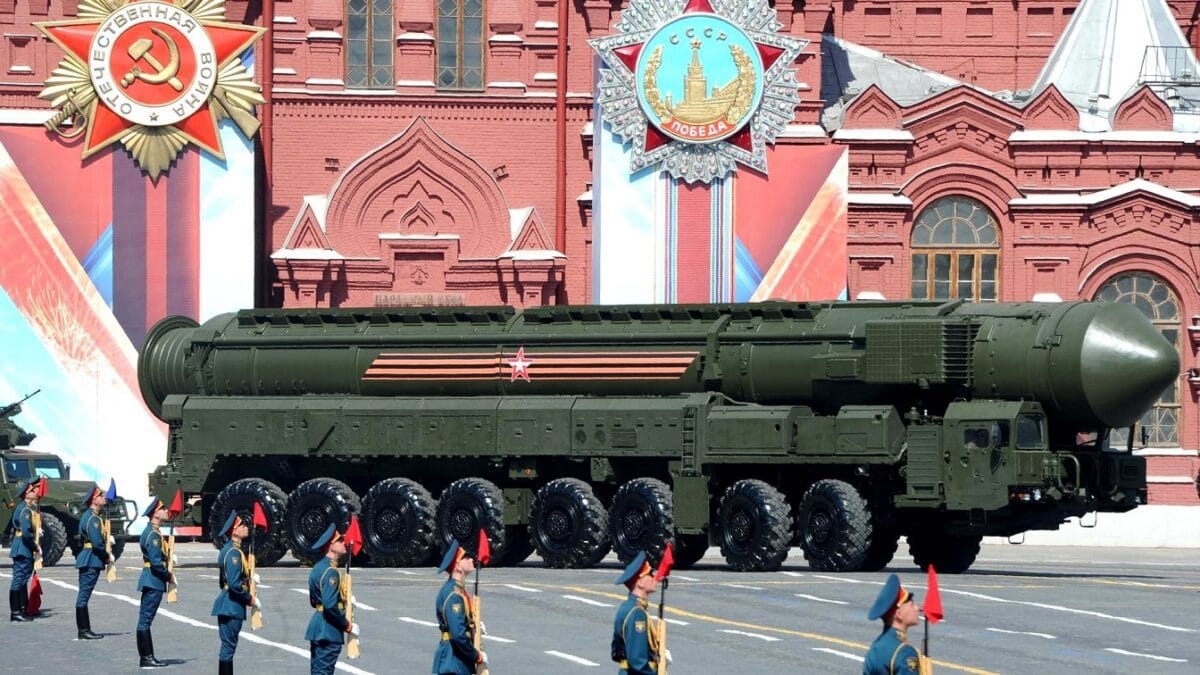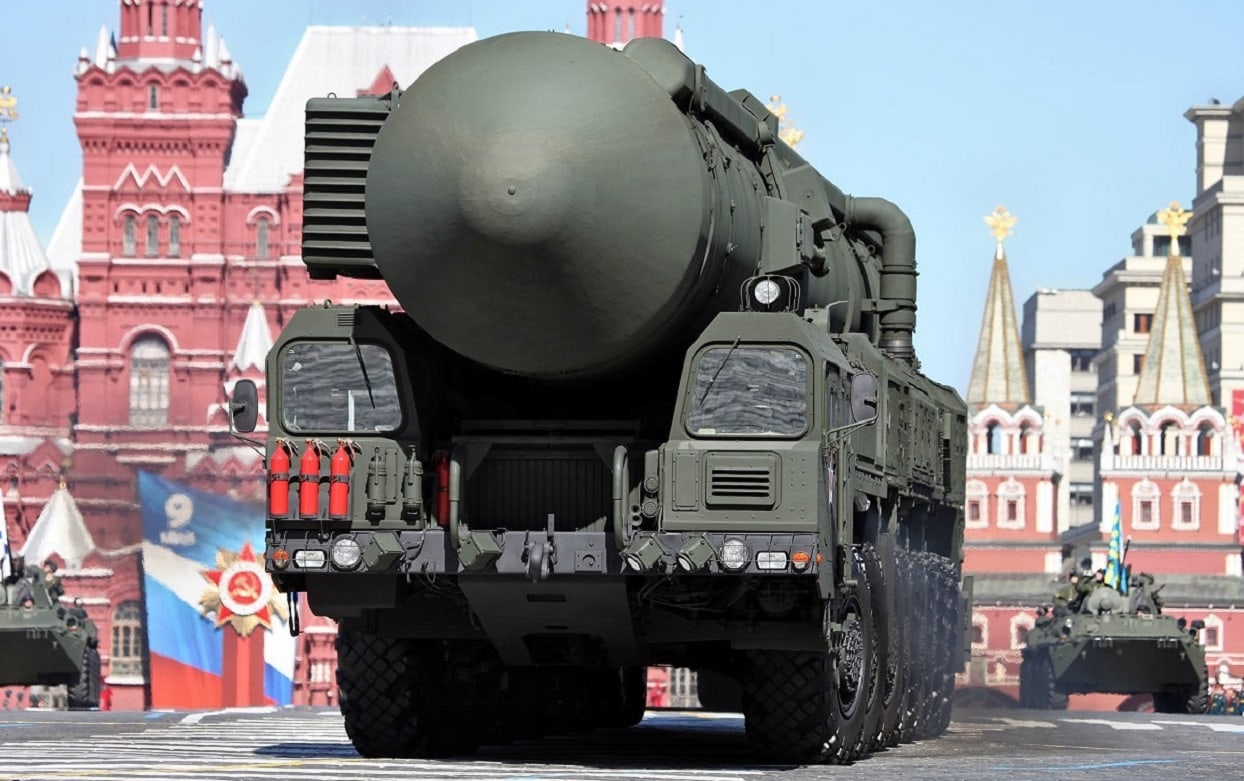Would Russian President Putin dare use nuclear weapons in Ukraine? There are 4 possible paths to such an outcome – Russian President Vladimir Putin’s vague threats of nuclear weapons use to counter Western material support to Ukraine, is widely seen to give Moscow a terrifying negotiating advantage. However, on closer examination, the Russian attempt to use its nuclear arsenal to deter foreign involvement, is demonstrably weak for three reasons. First, the U.S. is able to respond proportionately, and thereby deter escalation, at every important threshold. Second, a continuance from one threshold to another never concedes escalation dominance to Moscow, meaning that any action taken by Russia will produce an unavoidable and costly retaliation. Third, as indicated by a recent hemorrhaging of Putin’s coterie of oligarchs, the uncertainty of the firmness of the Russian public’s support, or at least deference, to Moscow, may be accentuated by the threat of nuclear escalation. These limitations are demonstrable in the four following scenarios.
In the first scenario, Russia detonates a tactical nuclear warhead ground burst over the iron works in Mariupol (or a similarly hardened target), daring the U.S. to intervene, and demonstrating its determination to impose a negotiated solution on Kyiv, favorable to Moscow. To this end, Russia has 5,977 nuclear warheads in 2022, of which 1,912 are tactical and theatre weapons, including seventy 100 kiloton warheads launched by the SS-26 Iskander-M (350 km range) mobile theatre missile and R-500 (500 km range) cruise missiles, and an estimated 500 air dropped bombs that can be delivered by the Su-24 and Su-34 aircraft. Russia never deployed an enhanced radiation (or neutron) bomb, and it is believed that its arsenal of 152mm and 203mm nuclear artillery shells have been removed from service. Given the scarcity and cost of an Iskander rocket, and the low Ukrainian anti-air threat, Russia is likely to ground burst a ten kiloton air-delivered bomb to attack Mariupol’s Azovstal steelworks’ underground tunnel system. A reminiscently difficult combat environment was the German gas-assisted assault on the subterranean French Forts Vaux and Douaumont, during the epic Battle of Verdun.
Using the Lovelace Nuclear Bomb Effects Computer, it can be determined that a ten kiloton ground burst will at best create a crater 13 meter deep crater against the hard rock and reinforced bunker construction, insufficient to expose the complex, or inflict acute radiation poisoning, but perhaps sufficient to entomb the defending Ukrainian forces. The atmospheric radiation released from a ground burst, where the fireball makes contact with the surface, will be carried by the prevailing eastward winds will expose a great many Russian allies including Central Asian states, Iran, India, and China.
The U.S. response to such a limited nuclear demonstration should be a strictly conventional intervention of air and long-range artillery against Russian forces within Ukraine. A Russian use of a nuclear weapon will sway neutral and Russian-allied states, and their publics, away from Moscow, including all but the most dependent regimes like Syria. For example, the Soviet practice of terror in its war in Afghanistan led to the alienation of many developing world allies, including Cuba and Angola. Also, the U.S. should not use its global precision strike capability, its highly accurate conventional strategic ballistic missile attack, against targets in the Kremlin. While this would publicly demonstrate Putin’s defensive weakness, even a small volley of three transpolar or sea-launched missiles would likely trigger the launch and high atmospheric detonations of Moscow’s nuclear-tipped Gazelle and S-300 anti-ballistic missile defenses, for which there are 68 and 290 nuclear warheads respectively. The key principle is to minimize Moscow’s normalization of the use nuclear weapons by not providing them unnecessary opportunities.
The U.S. should not be tempted to retaliate at sea, even with conventional forces, since Russia has maintained a significant naval nuclear capability, and therefore has escalation domination. Russia possesses about 935 naval nuclear warheads for torpedoes, anti-submarine depth-charges, anti-ship missiles, and naval air defense systems, and 29 Sepal and Stooge nuclear coastal defense missiles. It also has 580 nuclear warheads for its Kh-22, Kh-55 and Kh-102 supersonic cruise missiles, deployed by its Tu-95 Bear, Tu-126 Backfire and Tu-160 Blackjack bombers, and most likely reserved for anti-carrier operations. The U.S. Navy has no tactical nuclear weapons currently deployed at sea.
In the second scenario, Russia detonates an airburst theatre nuclear weapon against a concentrated Ukrainian military brigade, likely a strongly held position with some urban topography, like Zaporizhzhia. Although a single nuclear strike is unlikely to be decisive against an entrenched armed force, being far more effective against a force in motion, it may nevertheless compel a withdrawal, especially if immediately exploited by a Russian mechanized attack. It may also deny the area as a logistic transhipment point. Here, Russia is likely to use its aforementioned Iskander-M or bomber-launched cruise missiles, because assuming the first scenario has already taken place and failed to deter Western help to Ukraine, Russia will be unable to reliably maneuver aircraft through Ukrainian airspace.
In this instance, a credible deterrent to repeated Russian nuclear bombardment, demands a proportional nuclear response by the U.S.. To this end, the U.S. has 1,490 W78 and W87 nuclear warheads atop its Minuteman III intercontinental ballistic missiles, and 2,736 W76 and W88 warheads on its Trident submarine-launched ballistic missiles, many of which can conduct rapid and accurate battlefield attacks. The U.S. also has 1,660 bomber-deployed nuclear warheads, of which 650 are B83s carried by B-2 strategic bombers, 320 W80 warheads for BGM-109 and AGM-86 cruise missiles carried by B-52 and B-1B bombers, and the remaining are approximately 800 B61 bombs of various types, including fifty 400-kiloton earth penetrating devices. Of these, 150 B-61 bombs are deployed in Europe at airbases in Belgium, Germany, Italy, the Netherlands and Turkey, which German, Italian and British Tornado aircraft, and U.S. F-35, F-18, F-16, F-15E, are equipped to deliver. A proportional U.S. response would be a B61 or W80 detonation against a concentrated Russian organization of brigade size configured for the offense, and therefore most vulnerable to a nuclear strike. It may be worthwhile to strike at slightly less important Russian targets within Ukraine, to arrest Moscow’s political need to demonstrate nuclear superiority. However, since the principle is to avoid mass devastation of Ukraine through an endless nuclear exchange, if this does not produce restraint, then the U.S. should inflict costs by pursuing strict proportionality in its retaliation. There is additionally the target limitation that Russian forces will seek refuge in cities like Kherson, using Ukrainian civilians as human shields. The U.S. should also engage in limited conventional cross-border air and artillery raids into Russia, which are unlikely to be very provocative at this stage and are a useful signal to Moscow of the next possible escalation target.

Russian ICBMs. Image Credit: Creative Commons.
In the third scenario, a Moscow frustrated with European and U.S. support to Ukraine, uses theatre weapons to destroy the Western Ukrainian city of Lviv, with a population of over one million, swollen with refugees. At this point, the battlefield exchange of nuclear weapons in Eastern Ukraine would have become normalized, so a new threshold would need to be crossed. It may therefore be opportune to conduct a strike against non-Russian military targets in Belarus because it may precipitate a collapse in a Russian ally, as well as signal that Russian allies are vulnerable. NATO would need to couple this attack with a warning that any Russian nuclear attack against the territory of a NATO member would lead to a theatre nuclear strike against military targets within Russia itself.
The fourth and most extreme theatre level nuclear attack is a strike against a population center in a NATO country, best described in General Sir John Hackett’s book, The Third World War: August 1985 and The Third World War: The Untold Story. In his account, a Soviet nuclear strike against the British city of Birmingham, is retaliated against with a NATO strike against Minsk, but which more appropriately could strike at any one of eleven Russian cities that has within a ten percent of the equivalent population of 1.1 million, such as Voronezh and Rostov-on-Don.

Tu-160 weapons loadout. Image Credit: Creative Commons.
This explicit examination of four likely nuclear attack scenarios has four effects. First, it demonstrates that Vladimir Putin does not have escalation dominance, deflating his nuclear jingoism. Second, it informs Western decision-makers, not primarily elected for their defense credentials, of the robustness and certain responsiveness of nuclear deterrence, and equips them to confront the Russian leadership. Third, it provides the West with the public diplomacy it needs to warn the Russian public of the direct costs of war that they have been spared by Moscow. Finally, it enhances deterrence by increasing the credibility of NATO’s response, thereby reducing Putin’s temptation to use nuclear weapons, containing the war, and increasing the likelihood of a negotiated peace in the Ukraine.
Dr. Julian Spencer-Churchill is an associate professor of international relations at Concordia University (Montreal), former army engineer officer, and has written extensively on Pakistan, where he conducted field research for over ten years

